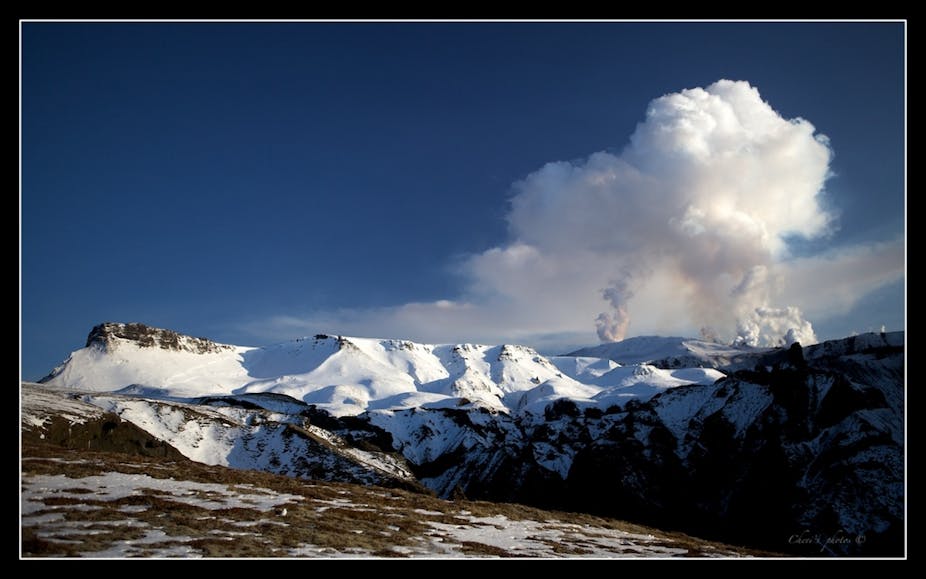The ash plume produced by the eruption of Iceland’s Grimsvotn volcano has begun to shrink but several European airlines have cancelled flights as a precaution.
The Icelandic Meteorological Agency said on its website on Tuesday afternoon Iceland time (3am Wednesday morning AEST) that the ash plume was less than 5km high, down from 9km on Monday.
“It is significantly weaker than in previous days, and does not reach 5km altitude. During the early stages of the eruption it reached more than 20km altitude, but in recent days it has been ranging from 5 to 10km altitude,” the agency said.
The initial blast on the weekend was stronger than the Eyjafjallajokull eruption that shut down European airspace last year.
British Airways grounded all London-Scotland flights yesterday as the ash cloud drifted toward Scotland and said on its website today that some flights to Germany had also been cancelled.
Dutch Airline KLM also cancelled several flights to and from the United Kingdom, Norway, Sweden and Germany, after grounding some flights to Scotland and Northern England on Tuesday.
Irish airline Aer Lingus had also cancelled some flights on Tuesday but said Wednesday that operations were back to normal.
“Based on the information available at this point in time we do not anticipate volcanic ash related disruption,” the company said on its website.
Dr Susan Loughlin, Head of Volcanology at the British Geological Survey, said on Tuesday that the Grimsvotn blast was the most powerful eruption in Iceland for over 50 years.
Dr Dave McGarvie, Volcanologist at The Open University in Britain said Grimsvotn spewed out 10-100 times more material per second than Eyjafjallajokull in 2010.
However, rain could dampen the ash cloud and reduce disruption to flights, he said.
“(Flying rules) have been changed since Eyjafjallajokull (when it was "if there’s ash around you don’t fly”). There are new concentration bands which will apply to Grimsvotn, and these allow aircraft to fly when ash is present but still within very safe limits. The net effect will be considerably less disruption for Grimsvotn,“ he said in comments released by the Australian Science Media Centre.
"Take home message: Grimsvotn is a much more powerful eruption than Eyjafjallajokull, but for a combination of reasons, any disruption to UK flights is likely to be considerably less than Eyjafjallajokull.”

